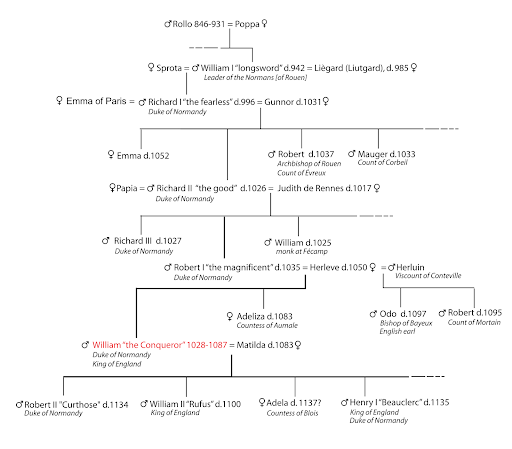Over the last few hundred years, borders, languages, people, empires, and cultures have changed, adapted, and modernised. Wars have been fought for reasons good and bad, and differing values continue to cause provocation. All of this is especially true of France, a nation whose history is full of wars (Napoleon comes to mind), and whose borders have been fought over countless times.
Can you really find out if you have French ancestry?
Absolutely! We are able to digest your biological data and understand more about where your ancestors were from, where they went to, whether they reproduced with other ethnicities, and more. The answers are just a swab away...
Firstly though, we want to dive deeper into French Ancestry and give you some historical food for thought.
What does ‘French’ mean and where does this word come from?
French is the term used to describe someone from France, as well as the spoken language. So, perhaps the better question is ‘What is France?’ and where did this name come from?
Towards the end of the 5th century, what we know today as France went under something of a rebrand. The Roman occupiers named the land Gaul, and its inhabitants Gauls. The Frankish rulers wanted to change that and called it Francia. For more than a millennia, Gaul and French were interchangeable words, but in recent times, Gaul has been resigned to history. This is aside for the Archbishop of Lyon, who is still known as the Primate of the Gauls (this has nothing to do with monkeys and is a catholic hierarchical term).
A long line of successful kings, including Clovis I, Charles Martel, Pepin the Short, and most famous of all, Charlemagne, ruled over the Frankish Empire, a region that today would have encompassed France, Germany, Switzerland, Austria, Belgium, Monaco, Luxembourg, the Netherlands, parts of Italy, Liechtenstein, and even as far as the borders of Croatia and the Czech Republic. These nations were yet to really be born, as feudal societies chose war over peace.
After a civil war around 840 AD, the Frankish empire began to dissolve and new nations were born. The Frankish realm was split into three, with Francia Orientalis or West Francia (today’s France) gaining most of the power, wealth, and prestige from the Treaty of Verdun (843). Efforts to reunify the three parts of the empire would continue until the 13th century, before defeat was finally accepted. Middle Francia included the low countries and the northern half of Italy and sat directly between East and West Francia. East Francia included everything east of the Rhine and was the biggest by land mass but smallest by population and power.
Since 843, France has had a continuous and unbroken line of heads of state, with almost 1,000 years of kings and emperors, before the French revolution violently removed the monarchy and installed a consulate. This line can be traced from Charles the Bald all the way to Emmanuel Macron.
To answer the question, there are two theories about where the name ‘Frank’ originated. In ancient Germanic languages (remember Germanic peoples would have lived under the Frankish rule) the word frank meant ‘free’. In this way, the subordinate classes would have referred to their leaders as the ‘free men’ or the ‘Franks’. Some suggest that the reverse is true, that the Germanics took the word frank to mean free, as their rulers or conquerors were the freemen who ordered them around. In this instance, the name would be much older and could be attributed to the Proto-Germanic word ‘frankon’, meaning javelin.
Now that’s cleared up…
What do we know about France’s historical migrations?
France is one of the longest continually-inhabited regions on Earth, with some settlements around 11,000 years old. Approximately 3,000 years ago, however, a dominant tribe called the Celts arrived and conquered the region. Those from Ireland, Scotland, and in fact, most of Europe, are likely to have some ancestors who were part of this invasion.
If we look at France on a map, we can see that it’s not an easy realm to defend.
- Easy access by the ocean on the northern and western coasts
- Low land borders to the east and northeast
- Powerful neighbours protected by mountains to the south-east (what is now Italy) and south-west (what is now Spain)
It’s no wonder the Franks pushed east to conquer their neighbours. They knew exactly what the Romans had done to oust the Celts, arriving in about 58 BC and taking less than 7 years to defeat them. Many of the Celts were able to flee over the channel. After 500 years of Roman rule, the Franks took charge for the next 3 centuries. Next up was the Holy Roman Empire and Charlemagne, first though, let’s talk a bit about bloodlines.
Spoiler alert: For those who are fans of Vikings, the popular TV show, you may remember that Rollo was left behind in Paris as a bargaining chip. He married the daughter of King Charles the Simple and lived happily ever after. This is based on the true story of Hrolf Ganger, known as Rollo the Walker, who became the first Duke of Normandy. It is said he was at least 140kg and as tall as 7 feet! Imagine a Viking Shaquille O’Neal.
Why is Rollo important? Well, he had a polygamous marriage and plenty of children and grandchildren to boot. One grandchild would be more significant than any other. Richard I of Normandy. Richard was a big fan of tactical marriages and allegiances and he fathered many children, including a daughter called Emma. Emma would marry and procreate with Aethelred of England, then after he died, with Cnut the Great (King of England, Denmark and Norway). Her children included the Wessex King Edward the Confessor and the Danish and English King Harthacnut. Later, William the Conqueror would lay claim to the throne using all of this impressive lineage as justification.
What’s most staggering is that all European monarchs to this day share a series of common ancestors who are in this lineage below:

Image source: Wikipedia
To sum up, the French were an exciting mix of people 1,000 years ago, and it never stopped.
What about more recent French migrations?
Because of French colonisation, French genes can be found all over the world. Parts of the United States (mainly Louisiana), several provinces of Canada (primarily Quebec), and about 20 different Caribbean islands will find plenty of French descendants. On top of that, you can find people with French ancestors in Morocco, Algeria, and Tunisia, all of West Africa, Equatorial Africa, and most of East Africa. In fact, the largest French-speaking (Francophone) country in the world can be found in Africa - the Democratic Republic of the Congo.
In Asia, the French colonised Laos, Cambodia, Vietnam, and parts of Thailand, India, Taiwan, and China. During their campaigns in the Middle East, Syria, Palestine, Yemen, and Lebanon all spent time under French rule. French Polynesia, Papua New Guinea, New Caledonia, and dozens of other Polynesian and Micronesian islands were also colonised, as were a few lightly-inhabited Antarctic regions. French Guiana and Suriname in South America, as well as parts of Brazil, spent time under French rule and were typically used as penal colonies.
The French Colonial Empire was second in size and power only to the Spanish Empire, with their campaigns taking place in the 16th and 17th centuries. Later, they would start another wave of colonisation in the 19th and 20th centuries, being second-most powerful behind Britain this time. There were around 150 million subjects under French rule at the peak.
If you currently reside in one of the countries listed and suspect that you may have a French ancestor, it’s most likely that the ancestor was a simple settler looking for a better life.
Today’s largest populations of people identifying as French or ancestrally French, outside of France, can be found in:
- Canada - 9.6m
- United States - 9.4m
- Argentina - 8.1m
- United Kingdom - 3.0m
- Brazil - 1.0m
- Chile - 800k
- South Africa - 700k
In regard to actual expatriates, the largest ‘home away from home’ nations are:
- United Kingdom - 300k
- United States - 300k
- Belgium - 250k
A very long lens into the history of French genetics
Want to know about your extended history, looking back as far as science can take us? In that case, you’ll have to try out the Living DNA Ancestry kit and see for yourself what mysteries your DNA can reveal.
What genome research has revealed is that around 7,000 years ago, hunter-gatherers from Spain moved north into the French region and settled there. Beyond that, we don’t want to reveal too much!

How can you find more about your French ancestry?
Not quite sure you’re ready to do a painless and incredibly informative swab? No worries, you can do your own research first and see what results come up. Here are some good ideas to get you started:
FranceGenWeb - digitized records and genealogical support
Geneanet - French local records database
GeoPatronyme - Research your French surname
Filae - French records kept with 1872
Genealogy - Information about physical archives for in-person research
Genea France - lots of different records stored digitally
Do you have a French name?
As was the case with many cultures, the surname was born out of the need to distinguish two people who had the same first name. This was done by referencing the parents, which was done using the prefixes ‘De’ and ‘Fitz’, meaning ‘son of’. To make things sweeter or more affectionate, diminutives were introduced through these suffixes:
- Eau
- Elot
- Elle
- Elin
- Elet
Over time, the names stopped changing with each generation and a family passed their surname down, with the father’s surname (patronymic) taking precedence over the mother (matronymic).
Many surnames were also given based on profession, for example:
- Marchand - merchant
- Gagne - Farmer
- Berger - Shepherd
- Bisset - Weaver
- Lefebre - Craftsman
Alternatively, people who moved away from their village would change their name to describe where they had come from, as nobody would understand their reference to their parents and they might have preferred this over a profession-based name. For example:
- Beaumont - from by the beautiful hill
- Dupont - from by the bridge
- Dupuis - from by the well
- Deschamps - from by the fields
- Beaulieu - from a beautiful place
All of these names can give clues to your ancestral past! If you find one ancestor called Berger, another called Gagne, and another called Deschamps, it’s safe to say that agriculture was a big part of your ancestor’s day-to-day lives.
What can you learn from using a Living DNA kit?
Have you enjoyed learning about French ancestry? We hope you’ll be interested to go even deeper and see how all of this exciting information wraps up into your own personal story. Through our swab kit, we can offer a report exploring:
- Recent history < 500 years
- Sub-regional ancestry information about migrations and where your ancestors called home
- Extended ancestry looking tens of thousands of years into the past
- Your DNA matches and whether you have relatives in our data bank
Thank you for reading.
